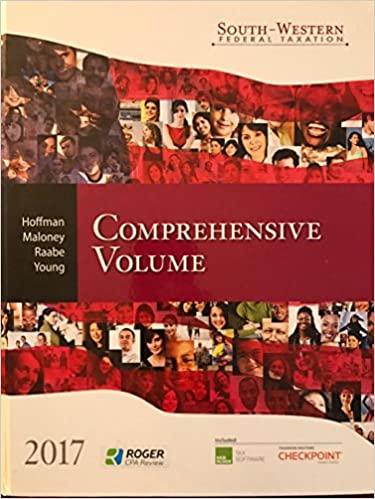Question
The owner of a warehouse/distribution facility wishes to obtain a new first mortgage on the property. The property has been completely leased to a Fortune
The owner of a warehouse/distribution facility wishes to obtain a new first mortgage on the property. The property has been completely leased to a Fortune 500 company with a AAA credit rating. The lease runs through 2035. The lease is a triple-net lease, which means the tenant is responsible for all operating expenses, including insurance, taxes, and utilities. For all intents and purposes, the owner has a risk-free cash flow for the next 15 years, which which he can use to obtain a mortgage on the property.His banker has obtained loan proposals from four different lenders. Options 1-3 require payment of interest only up until the final payment. Option 2 has a reduced interest rate in years 1 and 2. Option 3 has a 2% fee added to the loan balance, in exchange for a reduced interest rate. Option 4 payments are lower than interest-only payments would be, with the difference accruing to the loan balance each year. For all four loan options, assume only one payment is made per year, at the end of the period. Here are the cash flows that the owner would have under each option (all figures in $000's):
Option
Option 1
- Loan terms:Interest Only
- Year 1: $50,000
- Year 2: ($2,500)
- Year 3: ($2,500)
- Year 4: ($2,500)
- Year 5-9: ($2,500)
- Year 10: ($52,500)
Option 2
- Loan term: Teaser Rate
- Year 0: $50,000
- Year 1: ($2,000)
- Year 2: ($2,000)
- Year 3: ($2,800)
- Year 4: ($2,800)
- Year 5-9: ($2,800)
- Year 10: ($52,800)
Option 3
- Loan Term: 2% fee
- Year 0: $50,000
- Year 1: ($2,423)
- Year 2: ($2,423)
- Year 3: ($2,423)
- Year 4: ($2,423)
- Year 5-0: ($2,423)
- Year 10: ($53,424)
Option 4
- Loan Term: Accruing
- Year 0: $50,000
- Year 1: ($2,000)
- Year 2: ($2,000)
- Year 3: ($2,000)
- Year 4: ($2,000)
- Year 5-9: ($2,000)
- Year 10: ($61,657)
If the owner has a discount rate (i.e., personal cost of capital) of 8%, which is the best loan option?
Comparing Options 1 and 2, how many years until the cumulative undiscounted cash flows are the same?
How high would the owner's discount rate need to be for Option 3 to be better than Option 1?
At what discount rate does Option 4 have an NPV of zero?
If the owner takes Option 2, he will have an extra $200,000 at the end of Year 1. If he can invest that amount at 3%, what will it have grown to by the end of year 10?
Step by Step Solution
There are 3 Steps involved in it
Step: 1

Get Instant Access to Expert-Tailored Solutions
See step-by-step solutions with expert insights and AI powered tools for academic success
Step: 2

Step: 3

Ace Your Homework with AI
Get the answers you need in no time with our AI-driven, step-by-step assistance
Get Started


